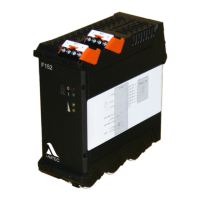47
11 Appendix
1
The product must not be transported, stored or operated outside the specified range. If it is, any guarantees with regard to safety-
related functions lose their validity.
2
If limit load is exceeded i.e. beacause of a cotactor burden, the described minimum value can not be guaranteed. The minimum value
is important for SPS-applications.
Output parameters
Output contact indicator signal NC (changer floating) -not failsafe
Output contact flame signal NO (changer floating) -failsafe
Permissible switching voltage
1
Max. 250 VAC; 120 VDC
Min. 10 VAC/DC
Permissible switching current
1
Max. 0.5 A cosφ 0.4 at ≤ 60 °C/ 140 °F
Min. 10 mA (for a critical load 50 mA)
2
Provide spark suppression externally for inductive loads,
do not switch capacitive loads.
Contact fuse (soldered)
1
0,5 A delay fuse IEC 60127-3
Safety time (FFDT)
Response time in the event of the flame going out
t
VAus
≤ 1 s
Startup delay t
VEin
≤ 1.3 s
Axillary energy for flame scanners
Voltage Max. 30 VDC
Min. 24 VDC
Self-monitoring pulse
Pulse ca. 1.5 s
Current loop Flame intensity - not failsafe
Current 0 … 20 mA
Load Max. 500 Ω
Open circuit voltage 22 ... 26 V
Base error ± 2 %
Spare parts
non
Technical capacity
Cross section flexibel 0.25 ... 2,5 mm
2
/23 AWG ... 13 AWG
rapid 0.20 ... 2.5 mm
2
/24 AWG ... 13 AWG
Operating mode Permanent operation
72 h operation according to TRD 604
Safety integrity level DIN EN 61508 part 2 - SIL 3
Overvoltage categorie DIN EN 60730-1, ÜK III
Electromagnetic interference DIN EN 60730-1
Emitted interference DIN EN 55022:2006, class B

